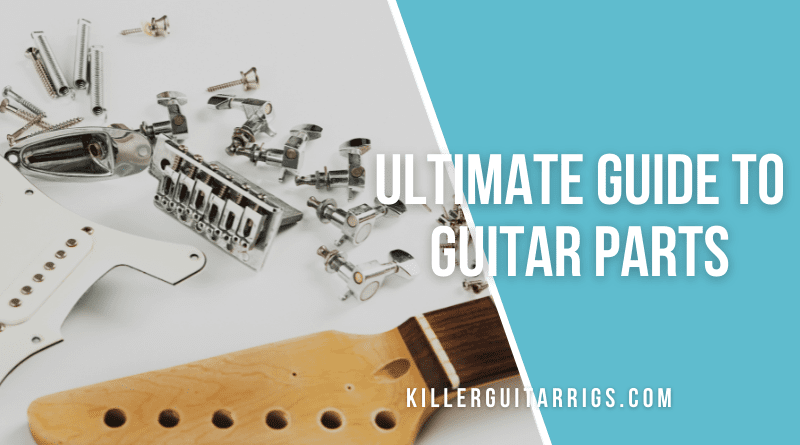One of the secrets to being a good guitar player is knowing your instrument intimately. This includes knowledge of what the different parts of the instrument are and why they are there.
Whether you play electric or acoustic guitar you will notice that certain physical features of the instrument are similar while other components are unique. When you begin your guitar journey, the anatomy of the instrument can often appear intimidating. But do not be overwhelmed. Read on to find out not just what the names of the different parts are, but what they are there for.
Let us take a look at some common parts that are found in all guitars and some that are unique to a few models.
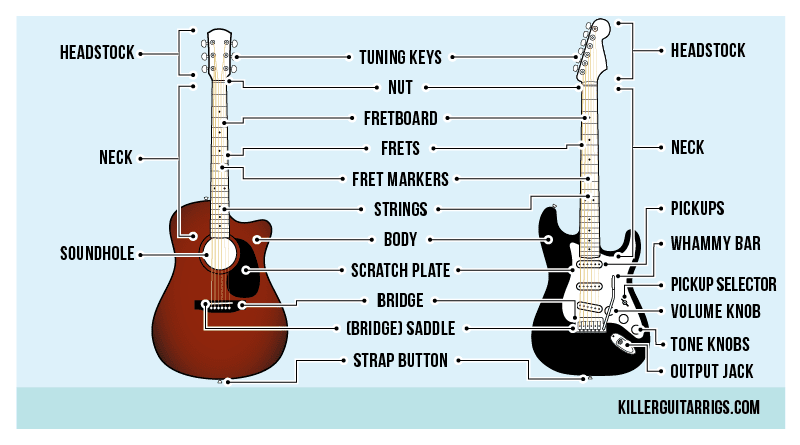
Contents
Headstock
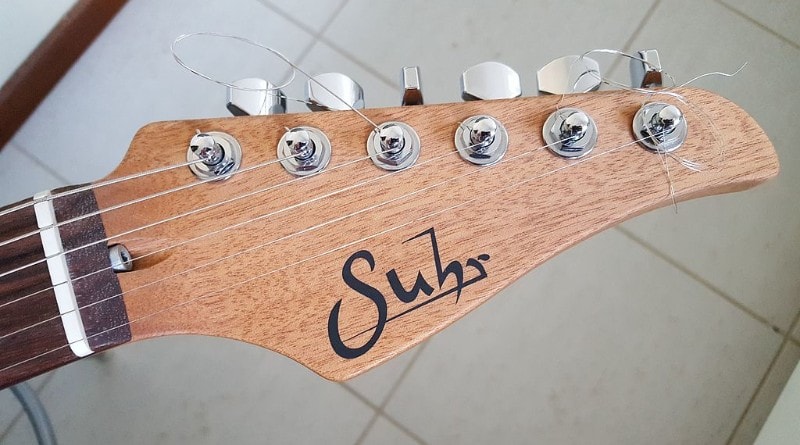
If you look at your guitar, the first thing you see on top is known as the ‘headstock’. This is where the strings are held in place with the tuning pegs (we will come to this later) and headstocks can be found on not just guitars but other stringed instruments such as violins, banjos, basses, lutes, mandolins, ukuleles, etc as well.
Headstocks in guitars can be of many different types. Some of the most common ones are:
Straight Headstock
A single piece of wood is used for the headstock and the neck. This gives it a ‘straight’ appearance since it is not angled in any way. Sometimes these are also referred to as “flat” headstocks.
Leo Fender is credited for designing these headstocks in the 1950s and the Fender Stratocasters are an example of a straight headstock in action.
Tilted Back/Angled Headstock
Angled headstocks are slightly tilted to form an acute angle with the surface of the neck. Although these are more expensive to make, the strings have better tension as they sit on the groove or nut, due to the curvature. This results in more sustain in the sound and angled headstocks are commonly found in Gibson guitars such as the Les Paul models.
Scarf Headstock
Scarf headstocks use two different pieces of wood to create an angled joint between the neck and the headstock. Most commonly found in Jackson guitars, these create less waste and are known for string stability.
Headless Guitars
Some guitars do not have any headstocks at all! These guitars are generally lightweight and allow quick string change. Brands such as Kiesel, Strandberg, and Steinberger manufacture headless guitars. Although you can change strings quickly on these guitars, they can often be difficult to tune due to their lack of tuning pegs.
The headstock of a guitar is very important because it contains many elements. They can often be fragile and so you must make sure you take good care of them when you are storing your guitar.
Neck
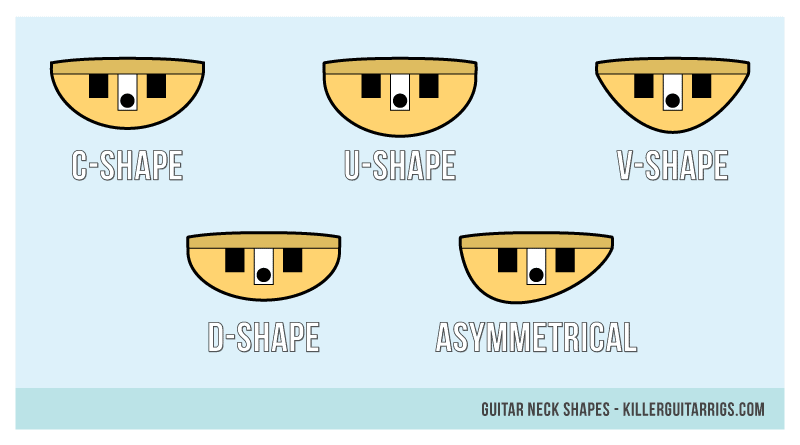
The long, thin piece of wood that attaches the headstock to the body of the guitar is known as the neck. They are either bolted or glued to the body of the guitar and come in various sizes. The neck holds the frets, fretboard, and truss rod.
Just like headstocks, necks can be of many different types. The common ones are:
‘U’-Shaped Neck
These feel thick to hold and are great for playing rhythm guitar. U-shaped necks are found in some Telecaster guitars and are often referred to as “baseball bat” necks. These are ideal for players who place their thumb on the back or the side of the neck.
‘V’-Shaped Neck
Although a lot rarer than the other types of necks, V-shaped ones can be found in many vintage guitars. These are ideal for guitarists who are more comfortable placing their thumb over the edge of the fretboard.
C. ‘C’-Shaped Neck
These are the most commonly found necks since they are suitable for all playing styles. These have a smooth curve around the back and this makes them comfortable to play.
Another common type of neck is the flattened version of a C-shaped neck. This is referred to as a ‘D’-shaped neck. These are generally thin and preferred by those who want quick movement across the frets or high-tempo playing.
The shape and size of the guitar neck are important because it gives the instrument certain tonal qualities. If you are curious about what kind of neck your guitar has, wrap an instrument cable or string around it. This will give you its curvature. When buying a guitar, it is advisable to keep in mind how comfortable you are navigating around its neck.
For more, see our full guide to neck shapes.
Neck Joint
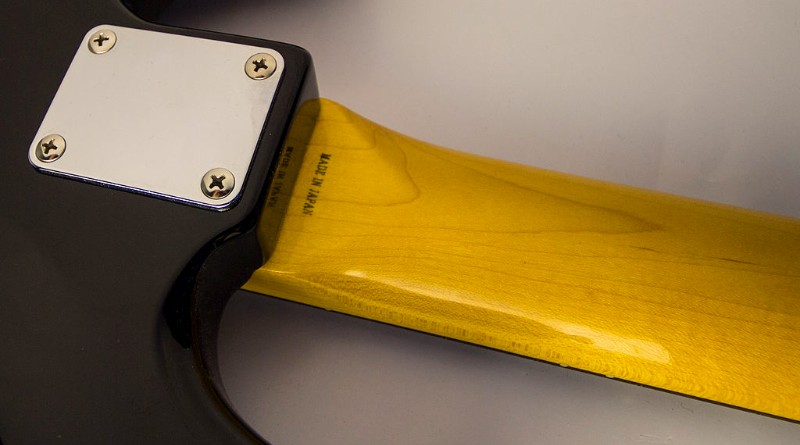
The neck joint holds the body and the neck together. Different neck joints have different kinds of influences on the sound. The three main types are:
Set
Most commonly found in acoustic guitars, a ‘set-in’ neck means that the neck is glued or firmly attached to the body using a dovetail joint. These have a warmer, brighter tone with large sustain but can often be prone to breakage are more expensive to make.
They are not common in electric guitars.
Bolt-On
When the neck is attached to the body using bolts or screws, they are called ‘bolt-on’ necks. These are easy to produce and repair and thus are used in most electric guitars.
While the backs of some guitars have a visible metal plate, others only have bolts or screws.
Neck-Through
In some guitars, the piece of wood that is used for the neck is extended through the entire length of the body. The strings, pickups, bridge, fretboard, etc are all mounted on this strip on the body. These are known as ‘neck through’ joints.
These are expensive to produce and difficult to repair, thus making them slightly more common in basses than guitars. However, some manufacturers such as Parker, B.C. Rich, Yamaha, etc do produce neck-through guitars.
Body
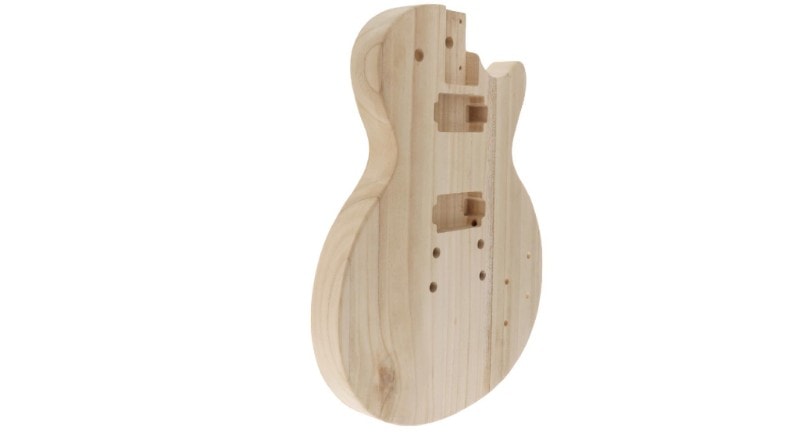
The strings on the guitar are dependent on the body to produce vibrations, which then produce sound. Different guitars have different bodies. While some are heavy, others can be lightweight. Let us take a look at the different kinds:
Solid
These are made from a single piece of wood and this gives solid-bodied guitars good sustain and they are resistant to feedback. A majority of guitars such as Stratocasters, Telecasters, Mustangs, Jaguars, Jazzmasters, Les Pauls, SGs, and Flying Vs all fall into this category. These guitars are well-loved by musicians across all genres.
Semi-Hollow
Semi-hollow bodied guitars use a wooden center block as the pickup mount. This makes them less prone to feedback than hollow-bodied guitars.
BB. King was one of the first musicians to play these and since then, have been played by many. This includes Dave Grohl, who plays a Pelham by Gibson.
Semi-hollow body guitars are ideal for musicians who prefer a lightweight guitar are whose sound is geared towards an added overdrive.
Hollow
Hollow bodied guitars are associated with genres such as jazz and blues because of the “jangly” tone they produce. Unlike solid-bodied guitars, these aren’t made from a single piece of wood and have an exposed opening towards the top of the body in the form of ‘f’ shaped holes. If you play one while it is unplugged, it sounds like a soft acoustic guitar.
These are also known as ‘semi-acoustic’ or ‘Thinline’ guitars. Rickenbacker and Gretsch are famous for making these guitars, and they are also available as acoustics (check our favorites here).
Dan Auerbach (The Black Keys), John Scofield, George Benson are all prominent musicians to use these guitars.
Acoustic Guitars
In acoustic guitars, you may have noticed that the shape and size may vary between two different models. The ‘dreadnought’ is the most common style and was developed by Martin. Other styles in their increasing order of size are ‘range’, ‘parlor’, ‘grand concert’, ‘auditorium’, and ‘jumbo’.
Fretboard
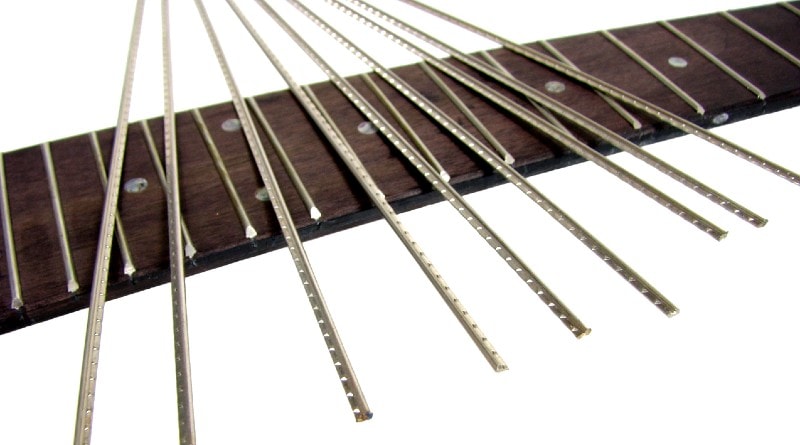
Now that we know what the neck of a guitar is, we will notice that the front of the neck is generally laminated and has markings on it. This is known as the fretboard or a ‘fingerboard’.
Maple and rosewood are some of the most common woods used to make fretboards.
The strings in a guitar run over the fretboard, between the nut and the bridge. Sound is created when we hold the strings down on the fretboard and use our dominant hand to strum or pick them.
Fretboards can be of varying radii. While classical guitars and some 12-string guitars have a flat fretboard; all others have a degree of curvature to them.
They can either be made with the same wood as the neck or a separate piece of wood that then sits on the neck of the guitar.
Some guitars also have “scalloped” fretboards where the wood is scooped out in between the frets to create a ‘U’ shape. These are primarily used by guitar players who are looking to shred. Examples of scalloped fretboards are the Fender Ritchie Blackmore and Yngwie Malmsteen Signature Series guitars.
The fretboard of a standard electric guitar has 22 notes, but there are others with 24. These are preferred by those who like to play in the higher registers.
Frets
Frets are strips of metal found on the fretboard of a guitar. They are generally made of alloys of nickel or brass. In the anatomy of a guitar, frets are these pieces of metal but when referring to ‘frets’, one usually means the space between two fretbars on the neck.
Frets are responsible for dividing the neck into different sections at fixed intervals. One fret represents one semitone.
The fret closest to the nut is the first fret and the numbers increase as we go down the fretboard, towards the body.
They determine the correct position of a particular note and this is why it is easier to hold chords on a guitar than on a violin or a fretless bass.
While frets can seem complicated at first, it is important to know which fret represents which note on the fretboard. This can not only greatly improve your playing and make it more instinctive, but it can also help you make better decisions when it comes to musical composition.
For more, see our full guide to fret wire.
Fret Markers
You may have noticed certain markings on some frets. These are called ‘fret markers’ and these visually indicate neck position to the player. They are found on the 3rd, 5th, 7th, 9th, 12th, 15th, 17th, 19th, and 21st fret. On the 12th fret (and 24th, if the guitar has one) they are represented by two dots or symbols to indicate the octave.
Fret markers can be made of a variety of materials such as plastic, clay, wood, mother of pearl, and even semi-precious stones.
Design-wise they can be a simple dot or more elaborate artwork across the fretboard.
For more, see our full guide to fret markers.
Strings
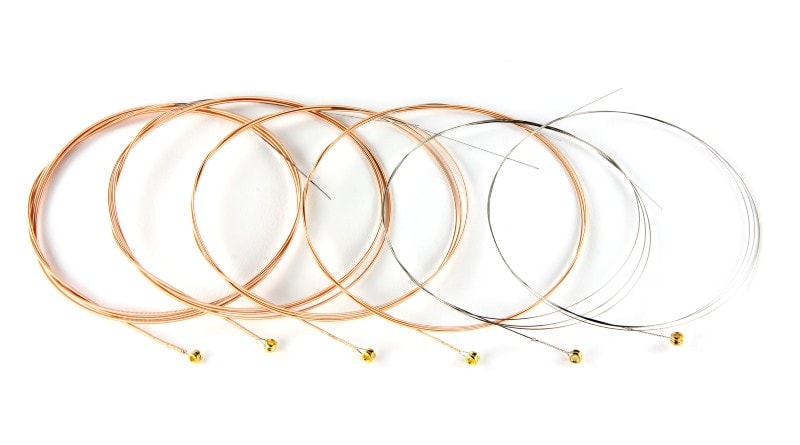
All standard guitars (electric or acoustic) have 6 six strings. The thinnest string is known as the first string and is tuned to a high E. The string number increases with its thickness and the last one, the 6th string, is tuned to a low E.
In electric guitars, strings can be nickel-plated steel, nickel, or stainless steel. While in acoustic guitars, they can be made of stainless steel, bronze, or phosphor bronze. Classical guitars generally require nylon strings.
Strings can be of different gauges. A gauge is the physical size of the string in inches.
Light gauge strings produce a bright sound and exert less tension on the neck of the guitar. Their drawback, however, is that they can be prone to breakage. Also, they do not offer as much note sustain as the other gauges.
While heavier gauges offer less mobility on the fretboard, they have better sustain and one can dig into the string when they play. These are preferred by guitar players who like to tune their guitars down from the standard E tuning. Many metal guitar players often use heavy gauge strings.
Medium gauge strings offer the best of both worlds and are preferred by many blues and rock musicians. They allow a decent about of note sustain and mobility around the fretboard.
Over time, strings often rust and start sounding dull or dead. This is why it is important to change your strings regularly. When they rust, they become even more prone to breakage. Many musicians use specialized products such as oils, to clean their fretboards and strings regularly. This ensures that the strings are in optimal condition.
For more on strings, see our full guide.
Tuning Pegs and Machine Heads
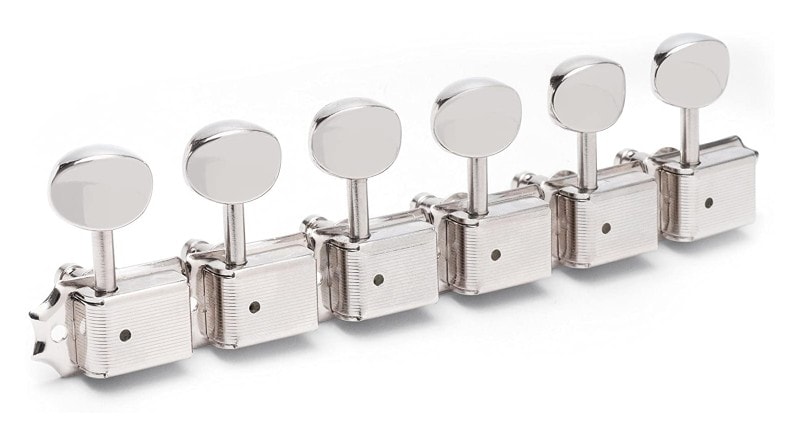
Tuning pegs or tuning machine heads are located on the headstock of guitars. They are responsible for keeping the strings in tune by adjusting the tension.
A typical tuning peg has a cylinder sitting in a pinion gear. They are connected with a worm drive. The string is threaded through this cylinder and then tightened or loosened by turning the tuning knob.
The placement of these tuning pegs depends on the shape of the headstock. While most acoustic guitars and Gibson guitars have a 3+3 design, where there are 2 columns and 3 tuning pegs on each side, guitars made by Fender generally have 1 column with all 6 pegs on the same side.
Music Man Sterlings have a hybrid design and they feature 4 pegs on one side and 2 on the other.
Of course, this does not apply to headless guitars. They have machine heads located at the end of the body.
Locking Tuners
For guitars that have a tremolo bridge or vibrato arm (we will come to those later), a locking tuner locks the strings in place using a retaining mechanism such as a pin. The strings are not wound around like in a traditional tuner, they are instead locked in place on the post.
Since the strings are not wound more than once, it reduces the chances of string slippage.
Not all guitars have or need locking tuners. These are ideal for guitar players who make extensive use of their tremolo.
String Retainer
Also known as ‘string trees’ or ‘string guides’, these are small metal widgets found in some electric guitars that pin the string down to the nut. They help provide an appropriate amount of tension where the string breaks over the nut, creating an angle. The downward pressure provided by them prevents buzz in the nut and also helps achieve accurate tuning.
These are located between the nut and the tuners, on the headstock. Although most are made of metal, some can also be made with materials such as graphite.
Guitars that have titled headstocks do not require string retainers. They can be found on flat headstocks such a Fender Telecaster or Stratocaster.
Nut
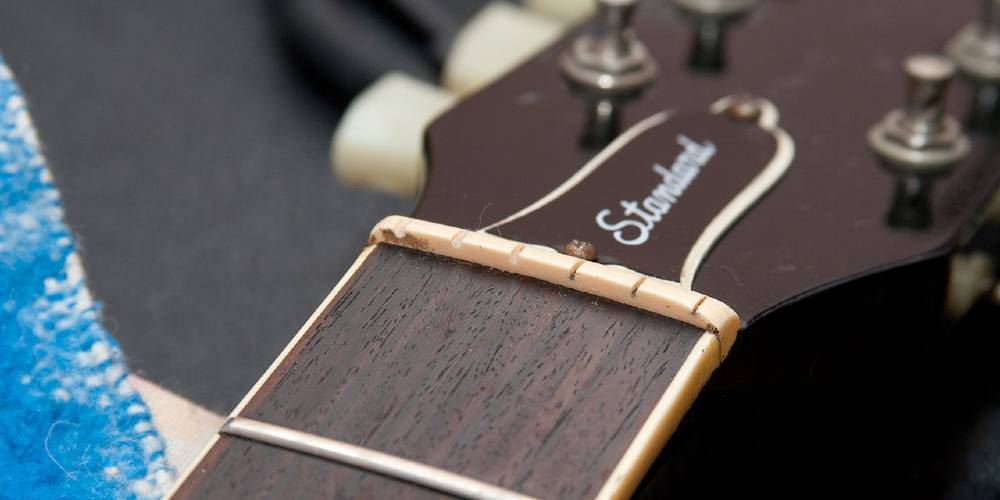
A nut ensures that the strings are properly spaced and are at a correct elevation from the fretboard. They have carvings in them that keep the strings in place. Although these are small components, they influence the sound of a guitar.
Guitar nuts can be of different kinds, such as:
Standard Nut
These are made of materials such as bone, brass, or high-quality plastics such as Corian, Micarta, or TUSQ.
Standard nuts are found in a majority of the guitars, both electric and acoustic.
Compensated Nut
Also known as a ‘staggard nut’, these alter the distance between the nut and the first fret based on the thickness of the string. These nuts follow the principle that strings with different thicknesses have different tensions.
Compensated nuts can be found on many models of Music Man and ESP guitars.
Rolling Nut
These are found commonly in Fender guitars. Instead of nut slots, the strings sit on roller bearings. This helps the strings slide freely and prevents them from getting stuck in the nut.
Locking Nut
Guitars with locking vibrato systems such as Floyd Rose or Kahler use ‘locking nuts’. These ensure that the non-playing part of the string remains unaffected by clamping the string against the nut. This helps maintain the tuning when using the vibrato arm.
Check out our guide to the TUSQ nut.
Bridge
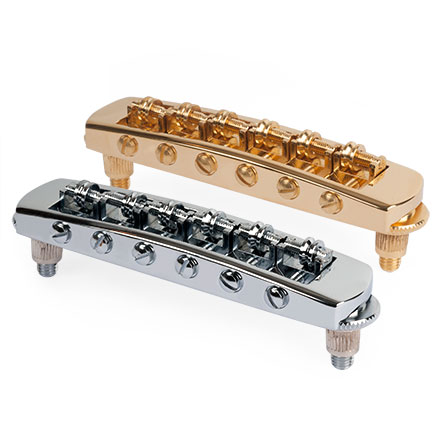
The bridge anchors the strings to the body of the guitar and it is located on the lower part of the body. It directs the strings over the soundhole in acoustic guitars and the pickups in electric ones to the fretboard.
A bridge has many functions. It helps maintain the intonation of a guitar, controls fretboard action, and helps in string alignment. On some specialized bridges, it gives us the ability to alter the pitch of a note when using the whammy bar.
On electric guitars, bridges are of two primary types: fixed and tremolo.
A ‘fixed’ bridge is attached firmly to the body and they keep the strings in place. They act as the endpoint for the strings in the guitar. These are also called ‘hardtail’ bridges.
A ‘floating’ or ‘tremolo’ bridge enables players to achieve a vibrato without bending the strings with one’s fingers. These are commonly found in Floyd Rose guitars.
(Bridge) Saddle
Just like the nut, the saddle is responsible for maintaining the space between strings. These are a part of the guitar’s bridge. The saddle also helps the vibrations from the strings reach the soundboard or pickup from the bridge.
On electric guitars, they are fixed to the bridge with screws and made of metal. But they are adjustable as they need maintenance from time to time.
On acoustic guitars, they are generally glued into the bridge. The most common types of saddles are made of bone or plastic. The two main types of saddles are ‘straight’ and ‘compensated’.
This is a very important part of the guitar because it determines the action and intonation. This in turn affects the overall tone of the instrument.
Whammy Bar
In some electric guitars, you can alter the pitch by changing the tension of all the strings at once. This can be done with the help of a whammy bar.
Also known as ‘tremolo’ or ‘vibrato’, this is a metal arm that is attached to floating bridges on the guitar.
They can either be detachable, like the ones found on some Fender Stratocasters, or fixed like on Bigsby guitars.
You can hear a whammy bar in action on songs such as Surfing With The Alien by Joe Satriani, Where Were You? by Jeff Beck, and Wicked Game by Chris Isaac.
Scratch Plate
Also called ‘pick guards’, these are found on the body of the guitar and prevent damage to its finish when using picks. Scratch plates are commonly made of plastic and are laminated.
On some Les Paul models, the pickguard is often “floating” and is slightly elevated from the body by adjustable metal brackets to provide a certain level of customization to the player.
This component of the guitar is not found on all models. Acoustic guitars such as classical or flamenco guitars do not have scratch plates. Even for electric guitars, you may have noticed that not all Les Paul models have them.
All guitars don’t need to have pickguards. These are meant to protect the finish of the guitar and add to its aesthetic value.
Pickups
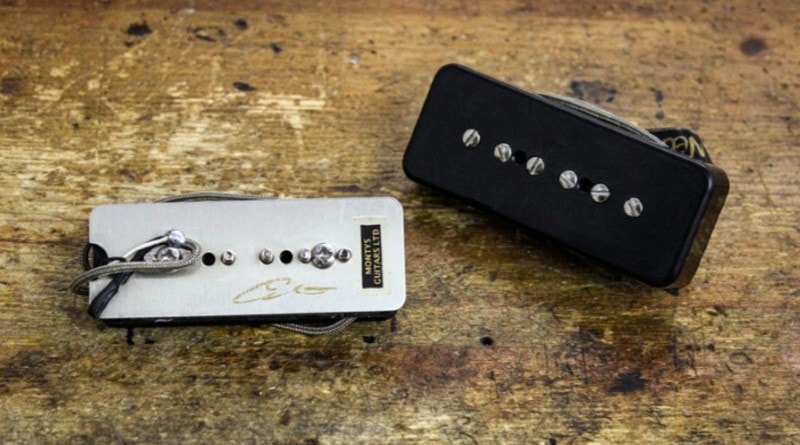
The pickups on a guitar convert string vibrations into electrical signals, that are then sent to an amp via the output jack. Pickups also shape the sound of a guitar.
On electric guitars, the pickups create an electromagnetic induction to convert the vibrations from the metal strings to electrical signals. They can be single coils, humbuckers, or a combination of the two.
Single Coil Pickups
Most commonly found in Fender Stratocasters and Telecasters, these have a treble-heavy and bright sound. This makes them ideal for genres such as blues, country, funk, and alternative rock.
Single coil pickups are called so because they are made of a single coil of wire wrapped around six magnetic poles. This generates the voltage from the vibration of the metal strings.
Humbuckers
Single coils can often generate unwanted noise. Humbuckers were invented to eliminate this problem.
There are two coils in a humbucker that cancel out the excess noise since they are in reverse polarity. Thus there is no ‘hum’ from the pickup.
Humbuckers can be found on Gibson, Jackson, B.C. Rich, and PRS guitars.
They add an overdrive to the guitar tone and are commonly used by musicians who play jazz, rock, and even metal.
Check out our guide to Les Paul pickups.
Active VS Passive
All standard guitar pickups are passive. This means that they do not require external electricity to work.
Passive pickups require an external source of power (most commonly a 9V battery) to boost overall power by activating circuitry. EMG manufactures active pickups and the EMG DG20 single-coil has been used by the likes of David Gilmour.
Acoustic Guitar Pickups
Not all acoustic guitars have pickups. But on those that do, they are not electromagnetic in nature.
Some of the common types of pickups on acoustic guitars are:
- Piezo: these lie under the saddle and produce a mid-heavy sound.
- Transducer: these amplify the soundboard of the guitar.
- Electro-magnetic style: although some guitars do have these types of pickups, they are generally not very popular because they produce a dull sound.
Pickups on electric and acoustic guitar can be changed and modified. Some guitar players like to customize the number and type of pickups they have on their instrument.
Soundhole
On acoustic guitars, the round hole on the front of the body helps project the sound better. The soundhole provides an opening to the resonant chamber in the body of the guitar.
While most guitars have a round hole, some manufacturers such as Ovation and Tacoma have other unique designs such as a combination of smaller round holes on the upper corner of the body and a ‘paisley’ design respectively.
Pickup Selector
Since guitars generally have multiple pickups, the pickup selector helps toggle between them. These are usually found above the tone knobs on the guitar. While some guitars such as the Stratocaster have a selector that lets you choose between warm and sharp sounds, others have a switch between the single-coil or humbucker pickups on your guitar.
Choosing the right pickup is extremely important to achieving an ideal guitar tone. So the more time you spend exploring how the different pickups sound without any external effects, the closer you will get to your goal.
Fine Tuners
These are unique to guitars with locking tremolo bridges such as Floyd Rose. The guitar is first tuned at the headstock and the nut clamps the strings in place to maintain the tuning. To make adjustments to the nut, these fine tuners are used. Fine tuners are generally used to make minor adjustments to the tuning.
Volume & Control Knobs
Volume Knob
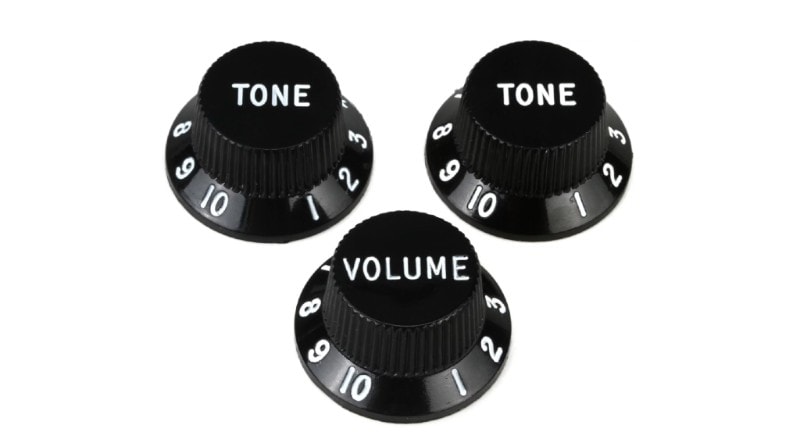
These are potentiometers that adjust the volume of the pickup output. Volume knobs also shape the sound to a certain extent because they change the amount of breakup produced by the pickups.
Tone Knobs
Once we have selected a pickup of our choice, we use the tone knobs to adjust the high frequencies. Turning them all the way up produces a bright but sometimes harsh sound and setting them lower gives a mellow tone.
Output Jack
On acoustic guitars with pickups and electric guitars, the output jack transfers the signal from the guitar to the instrument cable. Most guitars have a standard mono jack and are located at the end of the body.
Strap Button
Strap buttons are located on the top and bottom of the body so we can attach a strap and play our instrument while standing. Attaching a strap gives us better mobility when playing.
Truss Rod
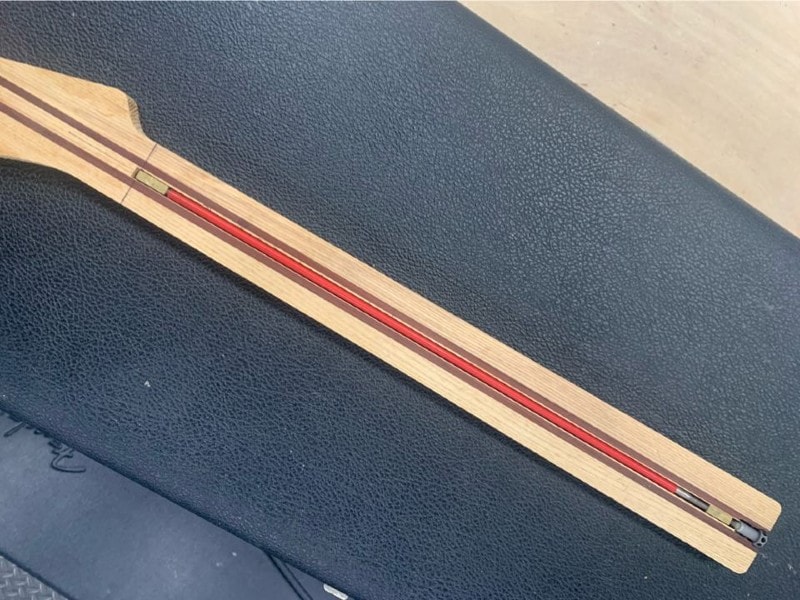
A truss rod is a steel bar or rod that stabilizes the forward curvature of the neck. Since guitar necks are made of wood, over time they tend to bend forwards or back. A truss rod keeps the neck and prevents this from happening.
Most guitars these days have an adjustable truss rod where it can be loosened or tightened to make adjustments to the intonation of the guitar. On acoustic guitars, they can be accessed from the soundhole in front.
Read our full guide to truss rods.
Final Thoughts
Every guitar is unique, no two models of the same make will have the exact same sound. This is why it is important to get to know your instrument thoroughly. You don’t have to practice your scales all day, sometimes it is important to just take a step back and noodle around. Now that you know which part does what, feel free to explore the uniqueness of your instrument.
On the other hand, if you are planning to buy a guitar. Now you know what are some of the things to look for in the instrument before you decide to make a purchase!

